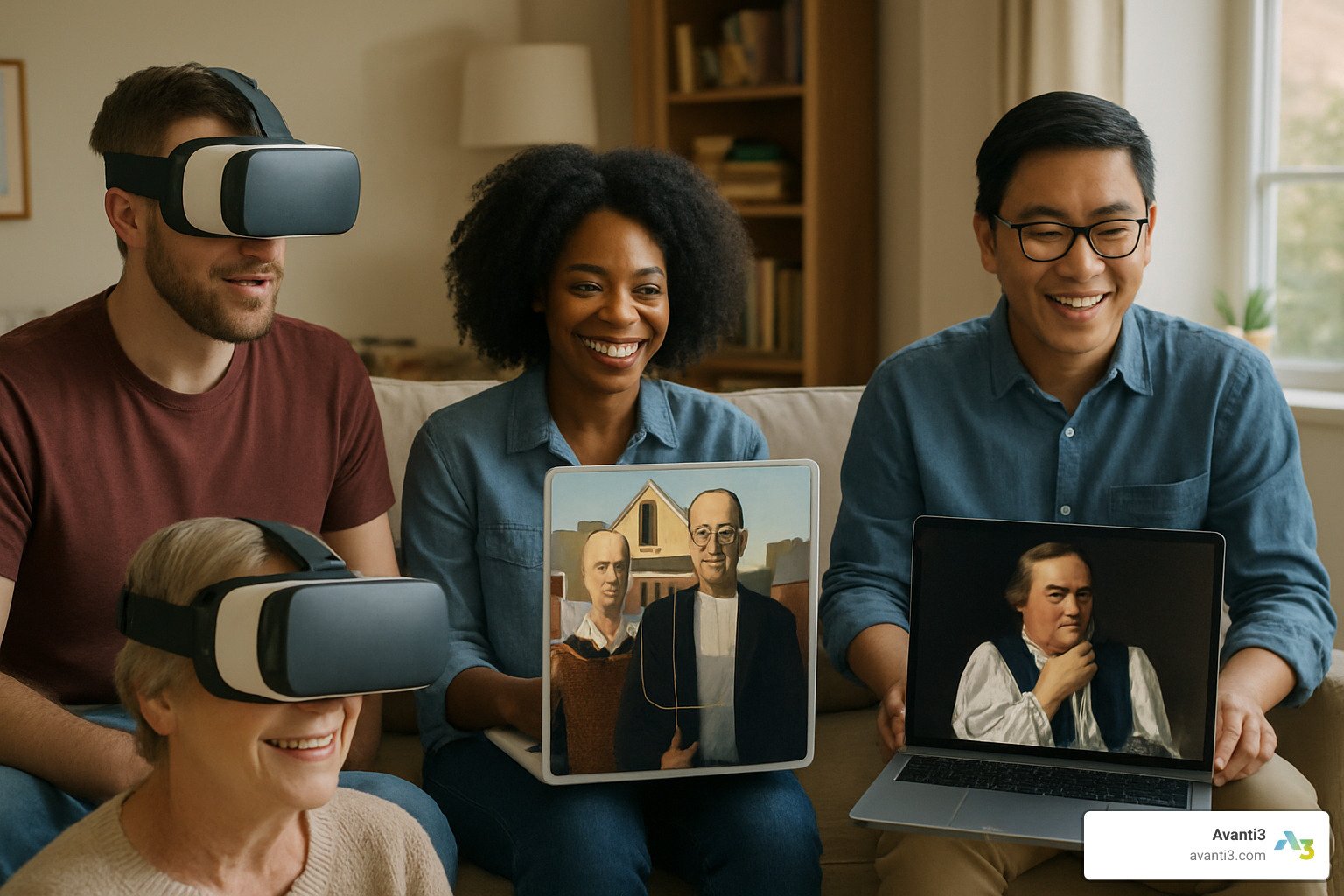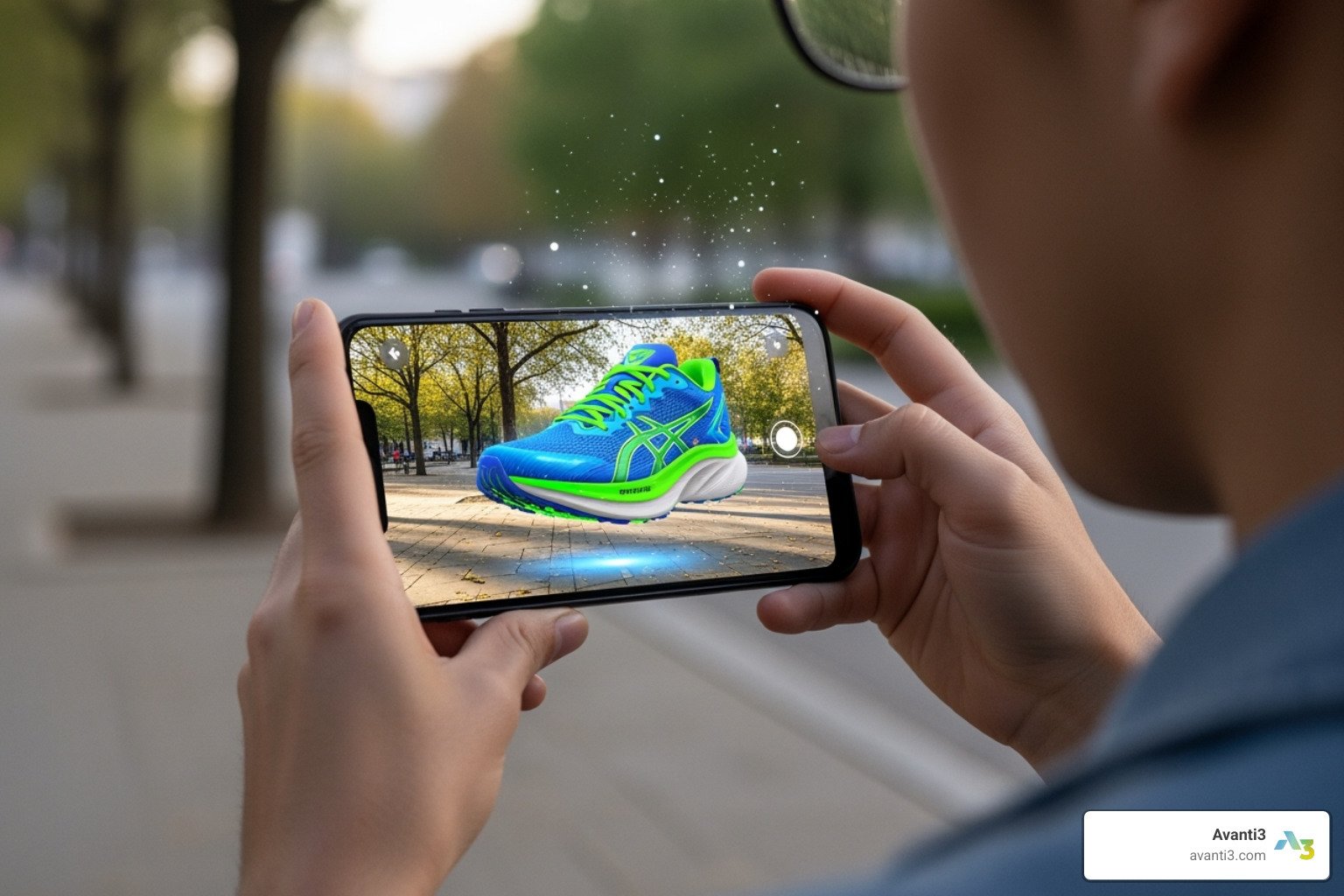Virtual Museum Experiences: 10 Powerful Must-See Tours 2025
Why Virtual Museum Experiences Are Revolutionizing Cultural Access
Virtual Museum Experiences have transformed how we explore art, history, and culture from anywhere in the world. Here’s what you can access right now:
• 360° Tours: Steer museum galleries room-by-room using your browser
• VR Exhibits: Immersive headset experiences like the Louvre’s “Mona Lisa: Beyond the Glass”
• Interactive Collections: Zoom into gigapixel artworks and explore behind-the-scenes areas
• Live Streams: Real-time guided tours and curator talks via social media
• Fully Virtual Museums: Digital-only spaces like The Kremer Museum showcasing 70+ masterpieces
The pandemic accelerated this digital shift dramatically. Google Arts & Culture now features over 1,200 international museums offering virtual access. The Met’s 360° Project alone has been viewed more than 11 million times worldwide, proving that people crave immersive cultural experiences beyond physical walls.
These digital experiences aren’t just replacements for in-person visits—they’re entirely new ways to engage with culture. You can float above medieval cloisters, step inside Van Gogh’s studio, or explore George Washington’s Revolutionary War tent in ways impossible during traditional museum visits.
The democratization of cultural access represents perhaps the most significant shift in museum accessibility since the establishment of public institutions in the 18th century. Where once geographic location, economic circumstances, or physical limitations might prevent someone from experiencing world-class art and historical artifacts, virtual museum experiences have eliminated these barriers entirely.
Consider the educational implications: a student in rural Alaska can now examine ancient Egyptian hieroglyphs with the same detail as a researcher at the British Museum. A teacher in São Paulo can take their entire class through the halls of Versailles without leaving their classroom. An elderly person with mobility challenges can explore multi-story museums that would be physically exhausting to steer in person.
The technology behind these experiences continues to evolve rapidly. Early virtual museum tours were simple panoramic photographs linked together. Today’s experiences incorporate artificial intelligence for personalized recommendations, haptic feedback for tactile sensations, and social features that allow friends from different continents to explore together in real-time.
Museums themselves are finding unexpected benefits from their digital investments. Virtual experiences provide detailed analytics about visitor behavior, revealing which exhibits generate the most interest and how people prefer to steer through collections. This data informs everything from physical exhibition design to marketing strategies and educational program development.
From simple browser tours to full VR headset experiences, virtual museums are breaking down barriers of distance, mobility, and cost while creating unprecedented access to global heritage.
I’m Samir ElKamouny AV, and I’ve helped countless brands and creators leverage cutting-edge digital experiences to build deeper audience connections. Through my work scaling innovative Virtual Museum Experiences and immersive technologies, I’ve seen how these platforms create new revenue streams while democratizing cultural access for global communities.

Know your Virtual Museum Experiences terms:
What Are Virtual Museum Experiences?
Imagine stepping into the Louvre at midnight or hovering next to Van Gogh’s easel9all without leaving your couch. Virtual Museum Experiences are digital twins of real institutions (and sometimes entirely digital-only museums) rendered through technologies like 3601 panoramas, browser-based WebVR, and full headset VR. Platforms such as Google Arts & Culture and the Smithsonian now let anyone zoom into gigapixel art or wander galleries captured in 22K resolution.
How They Differ From Physical Visits
2 No travel, queues, or opening-hour limits4 you can visit the British Museum at lunch or Versailles at 2 a.m.
2 “Impossible” viewpoints4 soar above the Met’s Great Hall or stand eye-level with a cathedral frieze.
2 On-demand depth4 linger for an hour on a single brushstroke, replay curator talks, or share finds instantly with friends.
2 Inclusive design4 screen-reader support, captions, and multi-language guides often outclass physical labels.
Core Technologies Powering the Medium
Photogrammetry and 3-D scanning capture objects millimetre-perfect. WebVR delivers headset-optional immersion straight in the browser, while gigapixel imaging lets you see pigment cracks unseen by the naked eye. Emerging haptic add-ons and AI recommendation engines round out a personalized, multisensory experience. Want to build one? Digital Experience Design breaks down the process and tool stack.
Main Types & Tech Behind Virtual Museum Experiences
Virtual museums come in three broad flavours, each with its own production cost and audience reach.
360° & Street-View Tours
Think Google Street View for culture. Click-to-move navigation works on any phone or laptop. The Met 3601 Project (11 M+ views) and the Louvre’s Petite Galerie walks prove how compelling simple panoramas can be.
VR & Immersive Headset Exhibits
Headset-ready shows like the Louvre’s “Mona Lisa: Beyond the Glass” or the fully digital Kremer Museum place you inside the artwork. Motion controllers and optional haptics let you “hold” a clay shard or feel canvas grain. Institutions ready for this depth can tap Virtual Reality Experiences for turnkey creation.
Interactive Collections & Social Platforms
Google Arts & Culture layers pinpoint zoom, curator audio, and shareable links. Museums such as the American Museum of Natural History turned daily Facebook Live walks into global classroom sessions. Visitor-made playlists and custom tours push engagement even further.
Must-See Virtual Museum Experiences Around the World

Below are a few unmissable samplers that show what’s possible.
2 The Met 3601 Project – six iconic spaces filmed with spherical cameras for ghost-like fly-throughs.
2 British Museum on Google Arts & Culture – roam the Great Court or zoom into the Rosetta Stone.
2 Guggenheim – spiral Frank Lloyd Wright’s ramp, artwork and architecture together.
2 Musée d’Orsay – Impressionist masters viewed inside a re-imagined Beaux-Arts rail station.
2 Smithsonian NMNH – explore current, past, and behind-the-scenes exhibits in one click.
2 Virtual tour of Washington’s Field Headquarters – a Webby-nominated 3601 look at George Washington’s travelling HQ tents.
Fully digital outliers include the Kremer Museum (70+ Dutch & Flemish works) and archival platforms like VRmuseum.nl that preserve lost or temporary shows. For art-focused builds, visit Virtual Art Experiences.
Benefits & Impact of Virtual Museum Experiences
Accessibility & Inclusion
Virtual visits erase distance, cost, and many physical-mobility barriers. Adjustable text, captions, and multi-language audio make culture more inclusive than most brick-and-mortar galleries could ever manage.
Educational Powerhouse
Teachers swap permission slips for hyperlinks: guided questions, quizzes, and repeatable deep-dives fit neatly into lesson plans. Students revisit exhibits at their own pace4 a game-changer for retention and special-needs learning.
Boost, Not Bust, for Physical Attendance
Data shows virtual exposure raises in-person intent. Visitors pre-plan routes online, then buy tickets, memberships, or merchandise once on-site. Analytics from digital tours also shape smarter physical layouts and marketing funnels.

Challenges, Costs & The Future of Virtual Museum Experiences
Premium VR shoots can run into five-figure budgets, and hardware hygiene or motion-sickness mitigation adds operational headaches. Smaller institutions fear being left behind.
Smarter, Leaner Solutions
Open-source stacks like Mozilla Hubs, A-Frame, and strategic partnerships (e.g., Google Arts & Culture hosting) slash cost. A phased roadmap4 start with panoramas, upgrade later4 keeps budgets sane. Grants and Augmented Reality Marketing programs provide extra lift.

On the Horizon
Blockchain brings iron-clad provenance, while NFT “tickets” open up bonus content and fan communities. AI curators personalize tours; metaverse galleries host live talks in persistent 3-D worlds. As always, tech should serve the mission4democratizing culture4not distract from it.

Frequently Asked Questions about Virtual Museum Experiences
Do virtual museum experiences replace in-person visits?
Not at all! Virtual Museum Experiences work more like movie trailers for the real thing. Research actually shows that people who explore museums virtually often become more excited about visiting in person, not less.
Think about it this way—when you take a virtual tour of the Louvre and zoom into the Mona Lisa’s brushstrokes, you’re not getting less interested in seeing the real painting. You’re probably thinking “Wow, I need to see this masterpiece up close!”
Physical museums offer things that screens simply can’t match. There’s something magical about standing in front of an actual 500-year-old painting, feeling the scale of a massive sculpture, or experiencing the hushed atmosphere of a historic gallery. Plus, you never know what unexpected findy might catch your eye as you wander through physical spaces.
The smartest approach treats virtual and physical visits as teammates, not rivals. You might browse a museum’s virtual tour to figure out which exhibits you absolutely must see, then visit in person for that authentic experience. Later, you can return to the virtual version to revisit your favorite pieces and notice details you missed during your physical visit.
What equipment do I need for VR exhibits at home?
The good news is that most Virtual Museum Experiences work with whatever device you already own. For basic 360° tours from places like the Smithsonian or Google Arts & Culture, all you need is a computer with Chrome or Firefox or a smartphone with internet access. That’s it!
If you want to dive deeper into immersive VR experiences like the Louvre’s “Mona Lisa: Beyond the Glass,” you’ll need a VR headset. But don’t panic about the cost—you can start small. Google Cardboard costs under $20 and turns your smartphone into a basic VR viewer. It’s like training wheels for virtual reality.
For a better experience, standalone headsets like the Oculus Quest run $300-800. These don’t need a computer connection, which makes them much easier to use. High-end systems might require gaming computers with powerful graphics cards, but most museums design their experiences to work on simpler setups.
The beauty of virtual museums is that they’re built for everyone. Most institutions offer multiple ways to access their content, so you can start with your laptop browser and upgrade your equipment later if you fall in love with virtual exploring.
Are virtual tours free or paid?
Here’s the best part—most Virtual Museum Experiences are completely free! This might be the only time you can visit the world’s greatest museums without spending a dime on admission, parking, or travel.
Google Arts & Culture hosts over 1,200 museums without charging anyone a penny. The Smithsonian, Met, Louvre, British Museum, and virtually every major institution offer their basic virtual tours at no cost. It’s like having a free pass to every museum in the world.
Some premium VR experiences do cost money, especially the fancy standalone apps designed for VR headsets. The Louvre’s “Mona Lisa: Beyond the Glass” was a paid app, though prices varied depending on where you downloaded it.
You might find some museums offering special virtual events, improved features, or exclusive content for members or paying customers. But these paid extras supplement the free experiences rather than replacing them. The core virtual museum experience remains accessible to everyone, which reflects these institutions’ commitment to education and cultural access.
This free access model makes sense for museums too—virtual visitors often become physical visitors, members, and supporters down the road.
Conclusion
Virtual Museum Experiences have evolved far beyond their pandemic origins into something truly revolutionary. They’re not just digital replacements for physical visits—they’re entirely new ways to connect with culture that didn’t exist before.
Think about what we’ve finded together. The Met’s 360° Project has been viewed more than 11 million times worldwide. The Smithsonian opens doors to research stations and storage areas that physical visitors never see. The Kremer Museum exists only in virtual reality, showcasing over 70 masterpieces in ways impossible in any physical space.
These numbers tell a story about hunger—people genuinely crave deeper cultural connections, and virtual experiences are feeding that appetite in remarkable ways.
The future isn’t about choosing between virtual and physical museum visits. Instead, we’re heading toward seamless hybrid journeys where both experiences make each other better. You might start by exploring ancient Egyptian artifacts from your couch, join a live-streamed curator talk during lunch, then visit the physical museum with focused interests and deeper background knowledge. Each experience builds on the others.
Technology will keep evolving. Web3 integration, AI personalization, and metaverse galleries are already creating new possibilities we’re just beginning to explore. But the heart of this revolution stays the same—breaking down barriers between people and culture while creating educational access that simply didn’t exist before.
The most successful virtual museum experiences share something important: they put culture first and use technology to serve it, not the other way around. The institutions leading this change understand that authentic educational value matters more than flashy features.
This is where Avanti3’s expertise becomes valuable. We help cultural institutions and creators leverage emerging technologies like NFTs, blockchain, AR/VR, and AI to build genuine audience connections while preserving what makes museums essential to society. Our approach ensures that virtual cultural experiences improve rather than replace the irreplaceable magic of authentic cultural engagement.
Ready to explore what’s possible when cutting-edge technology meets cultural preservation? Find how our AR/VR Immersive Experiences can transform your approach to digital cultural engagement while keeping authentic educational value at the center of everything you create.







